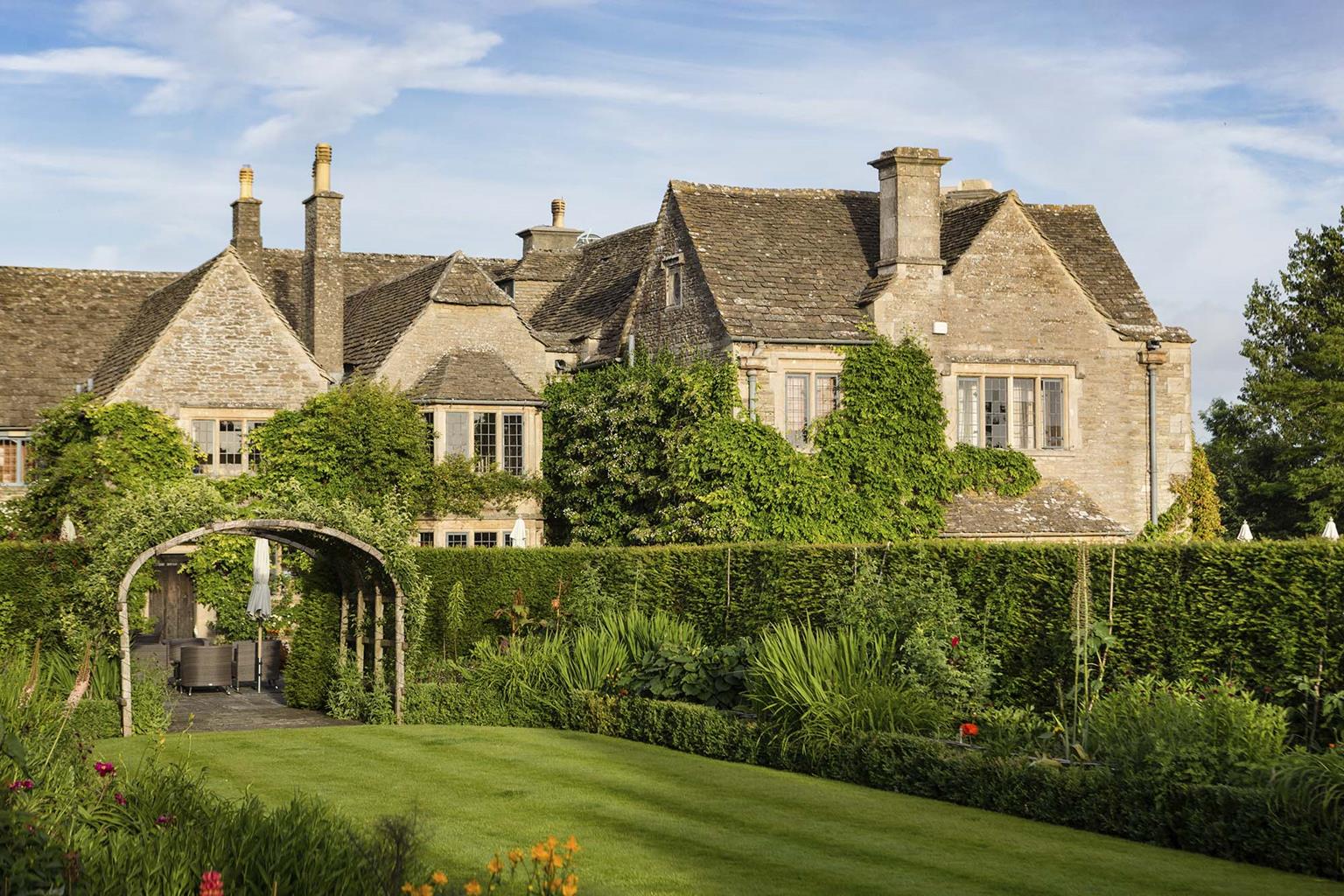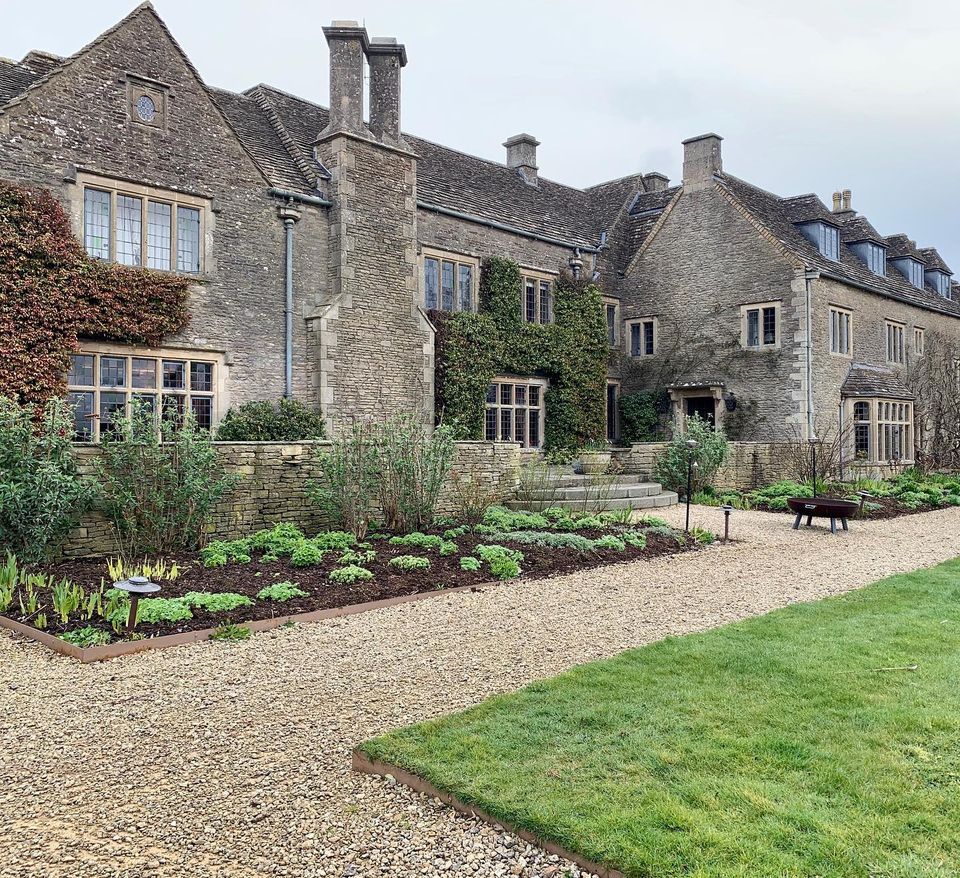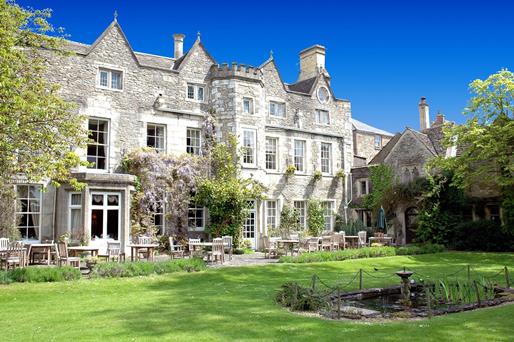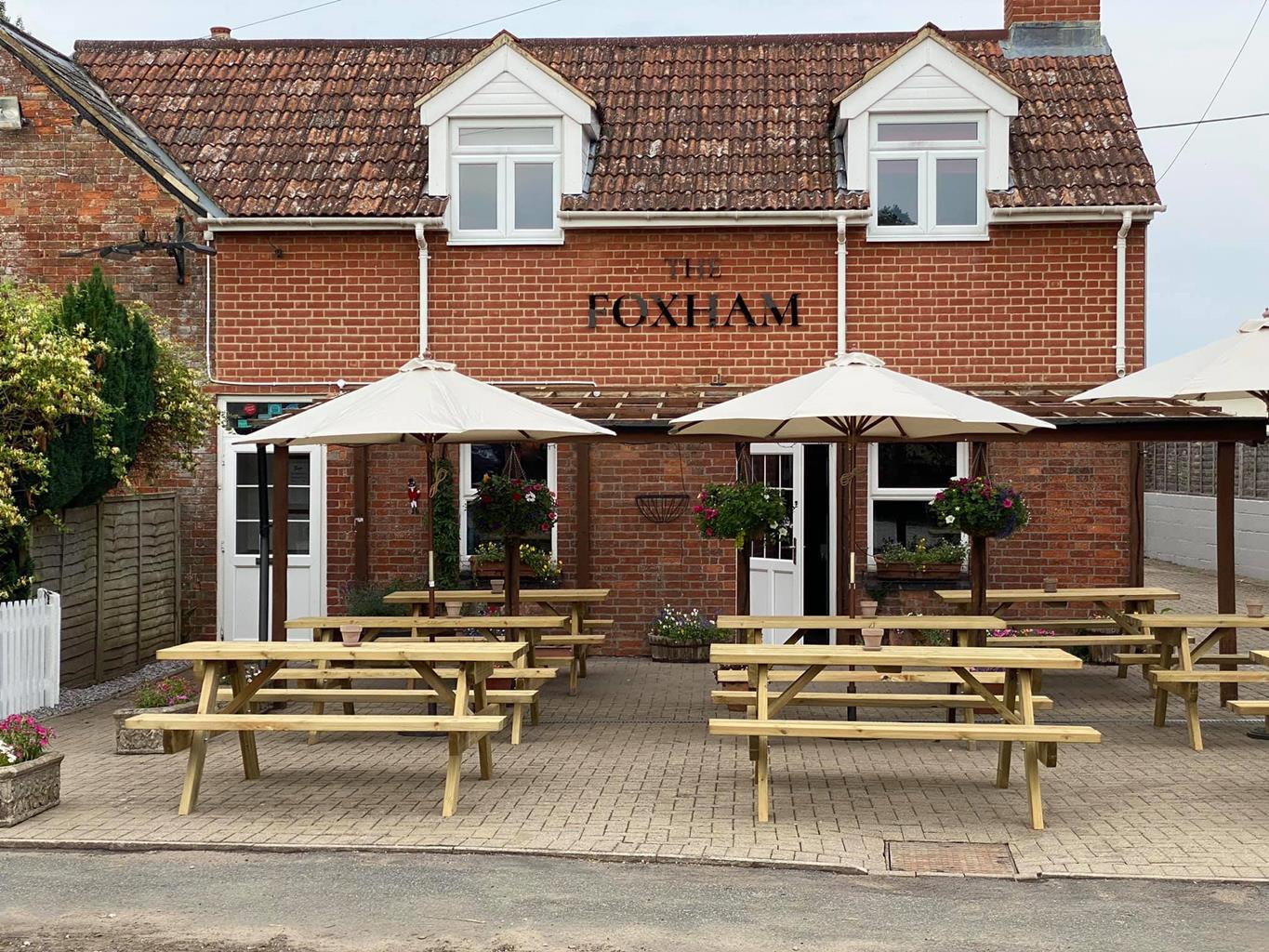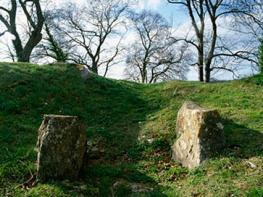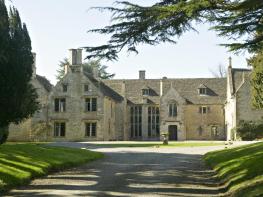The oldest purpose-built hotel in Britain, the Grade-I Old Bell Hotel dates back to 1220 and…
Malmesbury and the Avon

2 miles (3.2kms)
About the walk
A picturesque town of mellow Cotswold stone, Malmesbury stands between two branches of the River Avon on the site of a Saxon fortified hilltop town. Much of the route of the walk is within the boundaries of Malmesbury, which the late Poet Laureate John Betjeman described as ‘a perfect English medieval limestone town'. Dominating the surviving medieval street plan are the remains of a Benedictine abbey, founded in the 7th century AD by St Aldhelm, its first abbot. Malmesbury is one of the oldest boroughs in England, the original royal charter was granted by King Alfred in AD 880 and confirmed by King Athelstan (reigned AD 925–939), when he made Malmesbury his capital, holding court just outside of the town.
Killed by a tiger
Outside the abbey is the famous grave of Hannah Twynnoy, who died in 1703, aged 33. She was killed by a tiger, which was part of a menagerie visiting the town. After the dissolution of the monasteries in the 1540s, the abbey was sold for £1,517 to local wool merchant William Stumpe, who presented the surviving nave to the townspeople for their parish church. In the following centuries several mills sprang up along the local rivers and the town became an important centre for the manufacture of woollen cloth. It later became renowned for producing fine lace and silk.
Burgesses and commoners
Among many historic landmarks visited on this walk is Abbey House, a handsome Tudor building which was built by William Stumpe in the mid-16th century on monastic foundations. It has a 5-acre (2ha) garden featuring one of Britain’s largest private collections of roses. Also part of the trail is St John’s Street, which has many ancient houses, including a collection of almshouses from 1694 built on the site of St John the Baptist’s Hospital. Incorporated in the gable wall is an early 13th-century arch. The Old Courthouse, through School Arch, is where the Old Corporation of Burgesses and Commoners have met since 1616. These are direct descendants of the men living in Malmesbury more than 1,000 years ago to whom King Athelstan gave 500 acres (202.5ha) of common land (King’s Heath) for their help in the battle against the Danes, and this land is still passed down the generations.
The tomb of King Athelstan
One of Malmesbury’s most famous landmarks is the town’s 500-year-old Market Cross, an elaborate, octagonal building with a ribbed ceiling and intricate carvings. It was built for the market traders and buyers to stand in when wet. The isolated steeple is the remnant of the 13th-century St Paul’s church, the parish church until 1541. This now serves as the bell tower for the abbey church. Among the more striking features of the abbey are the Norman porch – one of the finest in England, ablaze with exquisite carvings – the vaulted nave roof, the 14th-century stone screens in the north and south aisles, and the tomb of King Athelstan.
Close to the start of the walk is Conygre Mead Nature Reserve, which is rich in wildlife and includes 170 plant species, 18 types of butterfly and various breeding birds. On the slopes grow native wild flowers such as common knapweed. In 1993 a decision was taken to re-excavate a pond close to the river here for the benefit of wildlife. This reminds visitors of the use of the area by the local monks in previous centuries.
Walk directions
From the car park, keep the river to your right and walk towards the abbey and Abbey House. At the information board, bear left, then right through a kissing gate into Conygre Mead. Keep right along the path and walk along the riverbank, noting the old railway tunnel and Abbey House across the river.
At the road turn right across the bridge and descend steps to reach a stile. Keep right across Longmead to the remains of a railway line in the right-hand field corner. Take the left-hand path through the next field and walk along the riverbank to a stile and footbridge. Cross the old sluice gate and continue to the lane beside Wynyard Mill. Turn right past the bowls club, following St John’s Street to Lower High Street.
Cross the road and go through the memorial gates and bear left along the walkway parallel to St John’s Bridge to rejoin the road opposite Avon Mills. Turn right along the pavement and go through the gate on your right to follow the permissive path beside the River Avon. Cross a stile and keep to the path through gates and across various footbridges, soon to leave the river, keeping beside the hedge to a gap in the field corner and a small stone bridge.
Cross the bridge where the path becomes paved to reach a footbridge across the Avon. At a T-junction, turn left along Burnivale, then climb Betty Geezers Steps on your right to reach Abbey Row, with the Civic Trust Garden on your left. Cross the road and bear right in front of the Old Bell Hotel and enter the close to visit the abbey.
Return to the Old Bell and take the path immediately right for the Cloister Garden. Walk through the garden and turn left down steps, then right along Mill Lane back to the car park.
Additional information
Field paths, town streets, several stiles
River valley and urban area
No problems on riverside pastures
OS Explorer 168 Stroud, Tetbury & Malmesbury
Station Road pay car park, Malmesbury
Malmesbury town centre
WALKING IN SAFETY
Read our tips to look after yourself and the environment when following this walk.
Find out more
Also in the area
About the area
Discover Wiltshire
A land shrouded in mystery, myth and legend, Wiltshire evokes images of ancient stone circles, white chalk horses carved into hillsides, crop circles and the forbidden, empty landscape of Salisbury Plain. To many M4 and A303 drivers heading out of London through the clutter of the Thames Valley, Wiltshire is where the landscape opens out and rural England begins.
Wiltshire’s charm lies in the beauty of its countryside. The expansive chalk landscapes of the Marlborough and Pewsey downs and Cranborne Chase inspire a sense of space and freedom, offering miles of uninterrupted views deep into Dorset, Somerset and the Cotswolds. Wiltshire’s thriving market towns and picturesque villages provide worthwhile visits and welcome diversions. Stroll through quaint timbered and thatched villages in the southern Woodford and Avon valleys and explore the historic streets of the stone villages of Lacock, Castle Combe and Sherston. Walk around Salisbury and discover architectural styles from the 13th century to the present and take time to visit the city’s elegant cathedral and fascinating museums. And if all of that isn’t enough, the county is also richly endowed with manor houses, mansions and beautiful gardens.
Nearby stays
Restaurants and Pubs
Nearby experiences
Recommended things to do
Why choose Rated Trips?
Your trusted guide to rated places across the UK
The best coverage
Discover more than 15,000 professionally rated places to stay, eat and visit from across the UK and Ireland.
Quality assured
Choose a place to stay safe in the knowledge that it has been expertly assessed by trained assessors.
Plan your next trip
Search by location or the type of place you're visiting to find your next ideal holiday experience.
Travel inspiration
Read our articles, city guides and recommended things to do for inspiration. We're here to help you explore the UK.



